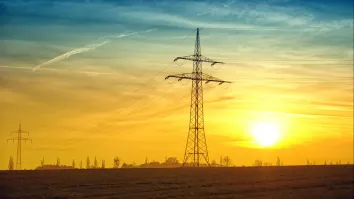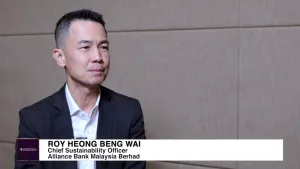
A new canvas: Why artists are jumping into the NFT space
Entering the digital space allows an artist to earn more through royalties each time their art sells.
Artist Lakshmi Mohanbabu would usually get a one-time earning for a piece of art she sells in a gallery. When she took a dive into the non-fungible token (NFT) space, she realised that she can make much more.
In an interview with Asian Business Review, Mohanbabu said artists can get a percentage of a future resale of their NFT-minted artworks because they are able to impose a royalty fee.
“In traditional galleries, when my art is sold to a client and I make a hundred dollars, then that’s it. If that client resells my artwork for a million dollars, it will no longer benefit me as the artist,” Mohanbabu said.
“In the NFT space, I get to earn from the subsequent sales of my art. If it is resold for a million dollars, I’ll get 5% of that. I'm assured of revenue every time my art sells again,” she added.
Mohanbabu said she also likes that she gets to track where her art goes or who the current owner is.
Compared to traditional art, artists also get to reach a wider audience in the digital space, said Mohanbabu.
This was echoed by Tokenize Xchange CEO Hong Qi Yu, saying that artists can leverage the internet to connect with a lot of buyers, unlike when selling traditional art in galleries which are constrained by physical locations.
Setting up and marketing challenges
Whilst the gains from selling NFT art seem attractive, Mohanbabu warned her fellow artists of challenges that come along as they enter the space given that it is relatively new and unfamiliar territory for many buyers.
The first hurdle Mohanbabu had to overcome was to identify which platform she should sell her artwork on. From experience, she suggested that artists choose a platform that is multicurrency since a lot of buyers are not yet familiar with cryptocurrencies. Her current project is on a multicurrency platform Virtua, Dubai.
She added that it is equally important for artists to choose a platform where they can easily mint their artwork. An example of this is ElemintNFT, the brainchild of Hong.
ElemintNFT simplifies the minting process of an artwork by simply uploading it on the platform, without going through the hassle of creating smart contracts, Hong told Asian Business Review.
A smart contract is an agreement between the seller and buyer of an NFT executed through computer codes, something which may be difficult to do for creators who are unfamiliar with the technical know-how.
The other main challenge to entering the NFT market is how to stand out, given the sheer volume of art that is already in the space. One way Mohanbabu overcomes this is by making digital counterparts of her physical artworks, which can then be translated into the metaverse.
Currently, she is working on a range of artworks based on her shoe designs. The collection will include actual shoes, 3D models and prints of the design, and a book of all the prints which will also have a counterpart in the metaverse. This also involves a collaboration for printing the shoes with the Singapore Centre for 3D Printing (SC3DP), Nanyang Technological University.
"Customers can buy the physical painting and 3D models of the shoes—and its NFTs counterparts. Their avatar in the metaverse can also wear those shoes,” she added.
Mohanbabu also has a project called “To the Moon and Beyond” that features 3D interaction cubes rendered as NFTs. The project accompanies her artwork “The Cube of Interaction” which has been sent to the International Space Station in February this year where it will remain for ten months and finally go to the Moon by 2025 .
“What’s interesting is that, since the physical counterpart of the NFTs will be at the International Space Station, the buyer of the NFT can look up in the sky and say that they own the work of art that is flying above them,” she said.
In doing the space and shoe projects, Mohanbabu said what she had in mind was to create art that not only bridges the gap between the traditional and digital spaces, but also art that has international appeal.
“The buyers of NFT art are very different from the buyers of traditional art. For an NFT buyer to see value in your work, you have to be completely different,” she said.
Interactive art
One of the most appealing types of artwork, not only in the NFT space, but in the art world in general, is interactive art, according to Mohanbabu.
In Hong Kong, brand tech group, Gusto Collective, is a leader in the creation of interactive art. Earlier this year, it was able to auction off an NFT art titled “Drowning in Love,” created by their meta-human project, Monoc, for $189,000.
Apart from being created by a meta-human, what made “Drowning in Love” unique is that it was created through a technique called “generated data art.”
“We created the foundation of the art which consists of Monoc floating on a pond, looking up to the heavens. Then we have flowers covering her. The idea is, she's dreaming about what falling in love feels like and, because she's a meta-human, she's actually never been in love,” Aaron Lau, founder and CEO of Gusto Collective, told Asian Business Review.
“What we did then is we created an algorithm that controls the blooming of the flowers, the movement of the waves, and so on. This algorithm is powered by the actual auction data during the seven-day period. Every click on the auction site, every look at a piece of work, is collected as a data point. If you happen to bid on a piece of art—doesn't matter which piece of art—it becomes a data point,” he explained.
“One set of data points controls the waves, another set controls the flowers. The artwork becomes complete after all the data points are collected at the very end of the auction,” he added.
Lau said the idea behind the artwork was to bridge the connection between investment in and creation of art. In July, Gusto Collective also launched a collaborative art piece for the Hong Kong government called “Garden of Eden,” where visitors can digitally grow flowers.
“On-site, you will have to download an app to experience the art. When you turn on the app, you will see a seed on your phone and you will be given instructions on how to plant the seed in the ground that we've created. You can then choose a cyber flower to be planted. You will see the flower grow right in front of the eyes until it's fully bloomed. Once fully bloomed, it will fly up to the skies of Hong Kong,” Lau shared.
Success in NFT space
Whilst having unique art can give artists a boost in the NFT art world, Lau advised those planning to enter the space to do marketing around the art that they create.
“Instagram, Twitter, and Telegram are being used as the information channel but Discord is where all the crypto folks aggregate. You need to market it to a discussion forum that focuses on NFT art,” Lau said.
Mohanbabu, for her part, said the key to achieving success in the NFT space is a mix of appealing art, a good platform, and an element of luck.
“It is good to know what is trending and follow that a little bit, but not completely because it's good to set your own trends,” she said.



















 Advertise
Advertise









